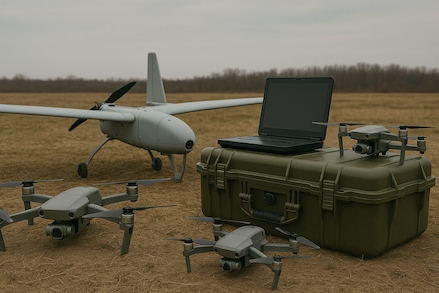
By Thierry DIME – Le Monde Economique
In the span of a decade, Turkey has undergone a strategic transformation as rare as it is spectacular, transforming its defense landscape from a dependent industry into an autonomous and conquering innovation hub.
While it was still massively importing its military equipment in the early 2000s, Turkey now ranks among the world’s top ten arms exporters, with sales exceeding $4.5 billion in 2023. This transformation goes far beyond the technical framework: it embodies a geostrategic and economic vision from which business leaders can draw important lessons in industrial sovereignty, innovation, and positioning in global markets.
The Turkish gamble rests on a deliberate and continuous strategy, initiated in the 1980s but vigorously accelerated under the Erdogan era. The « Vision 2023 » plan, aligned with the centenary of the Republic, set clear objectives: reduce dependence on foreign suppliers and develop an integrated national ecosystem. The results are tangible. The share of domestically manufactured military equipment in Turkish armed forces orders increased from 20% in 2002 to nearly 80% in 2023. This dynamic is driven by giants such as ASELSAN in defense electronics, ROKETSAN in missiles, and the now-famous BAYKAR, whose Bayraktar TB2 drones have become a strategic export product, deployed in more than thirty countries, from Ukraine to Azerbaijan. The success of these drones, capable of inflicting significant losses on conventional armies for a fraction of the cost of Western systems, has constituted a strategic breakthrough.
As an Ankara-based defense analyst emphasizes, « the Bayraktar is not just a drone, it’s a foreign policy tool. It has demonstrated that Ankara could develop, produce, and export a first-rate military capability without having to go through traditional NATO suppliers. »
On the economic front, this sector has become a powerful engine. The defense industry generates annual revenue exceeding $10 billion and directly employs more than 75,000 highly qualified engineers and technicians. It acts as a catalyst for the entire national technological ecosystem, with obvious spillover effects in the civilian sectors of aeronautics, cybersecurity, and artificial intelligence. The economic model is based on a close symbiosis between the public and private sectors: the Turkish state, via the Presidency of Defense Industries, provides the initial order and R&D funding, while companies, often led by a new generation of engineer-entrepreneurs, benefit from great operational agility. This approach contrasts with the cumbersome nature of European consortia and has enabled a rapid, iterative innovation cycle oriented toward concrete operational needs.
The Turkish trajectory thus offers a textbook case for Western countries. It demonstrates that technological sovereignty is not a utopia, provided one combines a long-term political vision, sustained investments, and agile project management.